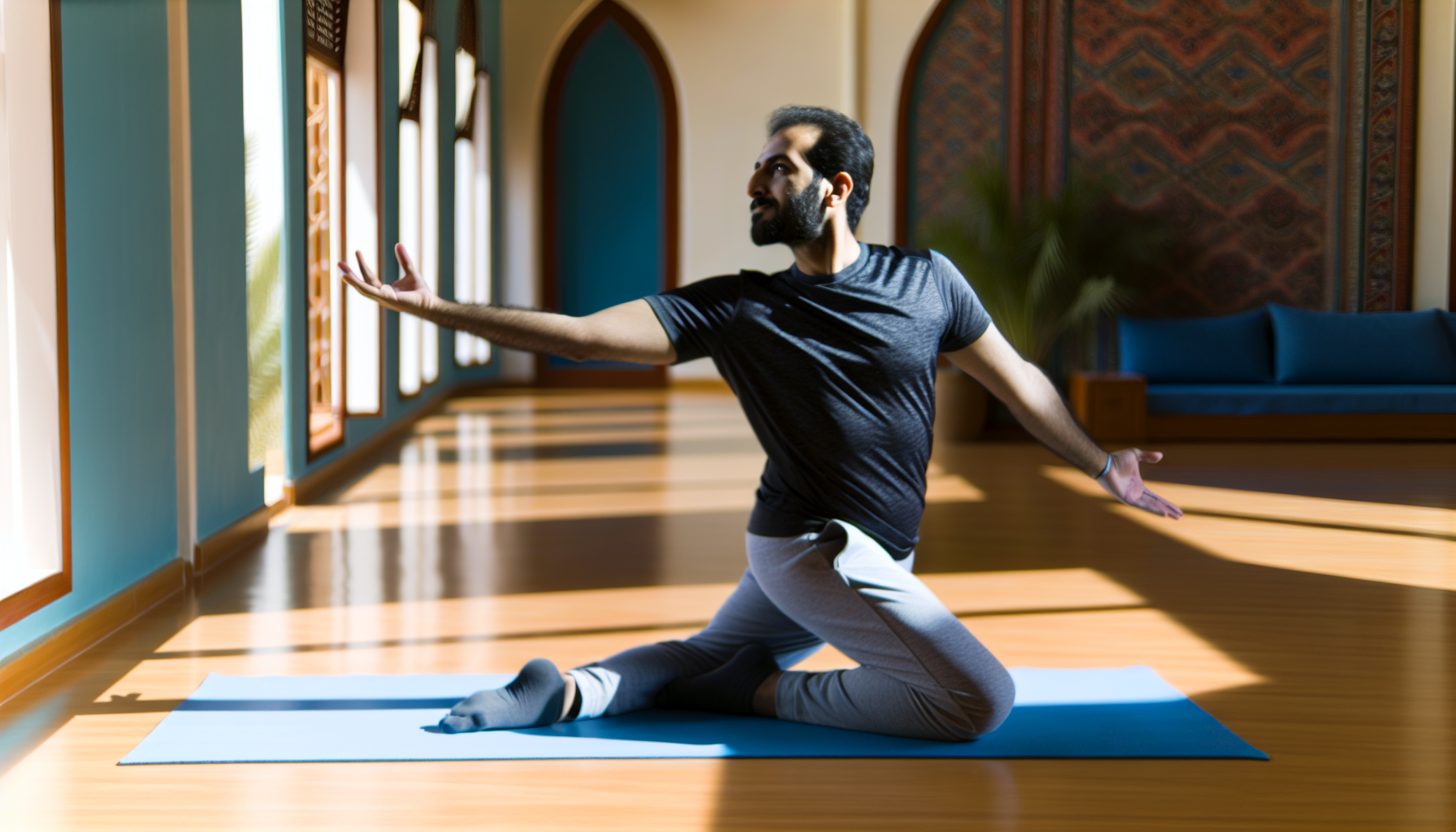what are the three disadvantages of yoga?

The first time I tried yoga was 16 years ago. I remember very well that I was in my sophomore year of high school and was diagnosed with scoliosis. Then, the doctor told me that I should try to swim and practice certain postures in yoga. Ever since then, yoga has been a part of my life.
After all these years of practicing on and off, from my personal experience and all the yogis I’ve met, I can confidently say, “Every coin has two sides.” Yoga is not an exception.
Today, we will dig deeper into yoga’s potential downsides. While it may seem gentle and safe, lesser-known adverse effects can still arise from our regular yoga practice.
In this article, we will examine yoga’s three primary disadvantages: the risk of serious injuries, its impact on mental and emotional well-being, and how it can affect one’s daily life and social interactions.
After reading this article on the Disadvantages of Yoga, I hope you can have a balanced perspective on yoga practice. Knowing these potential drawbacks, individual yogis, including pregnant women, will make better, more harm-informed exercise choices.
Key Takeaways:
- Risk of Serious Injuries: Yoga, despite its gentle appearance, can lead to injuries if not practiced with proper form and under qualified instruction. Common injuries include strains, muscle soreness, and joint issues. It’s essential to listen to your body, not push beyond limits, and seek guidance from experienced instructors.
- Impact on Mental and Emotional Well-being: While yoga can alleviate stress and improve mood, it can also pose mental and emotional challenges. Managing one’s mental state, adapting to changes in spiritual well-being, and addressing issues like dullness and overexertion are crucial aspects of yoga practice.
- Affect on Daily Life and Social Interactions: Incorporating yoga into daily routines may disrupt regular activities and social engagements due to the time commitment required. Additionally, lifestyle changes such as dietary preferences and perceptions by others can influence social interactions.
- Balanced Perspective: Despite the potential drawbacks, yoga offers numerous benefits for physical, mental, and emotional health. It’s essential to approach yoga with mindfulness, seeking guidance when needed, and maintaining a healthy balance between practice and other aspects of life.
- Injury Prevention: To avoid injuries, practitioners should focus on proper alignment, warming up adequately, communicating discomfort with instructors, and gradually progressing into poses. Seeking medical attention for injuries and allowing time for rest and rehabilitation are also essential.
- Mental and Emotional Resilience: Yoga can help individuals build mental resilience by reducing stress hormones, improving mood, and fostering relaxation. Techniques such as breathing exercises and meditation also contribute to effectively managing stress and anxiety.
- Social and Lifestyle Adaptations: Integrating yoga into daily routines requires managing time effectively and making adjustments to accommodate practice. While it may impact social engagements, the benefits, such as increased self-awareness and improved relationships, can outweigh these challenges.
- Mindful Practice: Practicing yoga involves being attentive to one’s body, acknowledging limitations, and making informed decisions about practice intensity and duration. Finding a balance between physical and mental benefits while being mindful of potential obstacles is critical to a fulfilling yoga practice.
Overall, understanding yoga’s potential drawbacks and benefits empowers practitioners to make informed choices and cultivate a balanced approach to their practice and lifestyle.

Delving into the Disadvantages of Yoga: A Comprehensive Look at Yoga’s Disadvantages
To mitigate the risk of injury in yoga, practicing with a qualified instructor who can guide proper form and technique is essential. Listening to your body and not pushing yourself beyond your limits is also crucial. Staying hydrated and taking breaks when needed is essential, especially in hot yoga environments.
When you enter yoga classes as an instructor or student, you might notice a competitive vibe in the room. There’s nothing wrong with that. However, the chances are you might get injured more quickly if you consider competing with the person next to you.
That is a typical rookie’s mistake. For example, you felt knee pain during the exercises, and most asanas involve the knees. You might feel embarrassed not to continue the class, but keep in mind that there’s nothing wrong with resting in a downward dog or savasana.
Incorporating yoga into your life in a balanced way means recognizing when to prioritize rest and recovery and when to push yourself to improve.
It also involves understanding the potential impact on your social life and daily routine and making adjustments to maintain a healthy balance.
For some yogis, yoga takes up 80% or even more of their lives, and that’s totally fine. It’s time to reflect on yourself; what does yoga mean to you? Do you need to maintain your work life, family, and friend’s time, or some me-time once in a while? There’s no judgment here; you own your body and your mind. What really matters is to keep mindfulness and self-awareness during yoga classes and other forms of yoga practice.
Health Risks of Yoga

In the world of yoga, real-life stories remind us what are three disadvantages of yoga, the three disadvantages of yoga and the importance of practicing mindfully and safely.
Think about someone who, in their eagerness to master advanced poses or practice with dangerous, untrained instructors. They tend to ignore alignment and end up with a neck injury from attempting challenging inversions.
You might also know that even an experienced instructor can push the body too far, striving for intense backbends without proper preparation, resulting in back pain, muscle strain, and even bone injuries.
These stories teach us that yoga is a journey of self-discovery and improvement. Respecting your body’s boundaries and seeking guidance from experienced instructors is crucial. By doing so, you can savor the numerous benefits of yoga while minimizing the risks along the way.
Also Read >>> Yoga for lower back pain
Identifying the Potential Health Risks Associated with Yoga Practice
Yoga can often lead to injuries, with common ones including stretching joints too far, strains in muscles and tendons, and specific problems in areas such as the neck, lower back, knee joint, shoulder, and wrists.
Specific postures are considered more risky than others when it comes to causing injury; for example, inversions like headstands or handstands require great care to avoid harm. Other positions often regarded as dangerous include specific bending exercises where back injuries often occur.
Unsuitable techniques in yoga practice may lead to overstretched muscles, spinal injuries, high blood pressure, heart disease, brain injuries, and other forms of health issues arising from those unwarranted harms and overall affective impact on the human body so through meticulousness about:
- Seeking medical advice before engaging into routines
- Having comprehensive knowledge about various forms of exercise making up Yoga sessions.
- Introducing gentle maneuvers at first, consequently progressing towards more demanding sessions by degrees every week after momentum was impeded (‘warm-up’ sententiously escalated intensity within bearing parameter
Overcoming Yoga-Related Injuries: A Guide positions often regarded as dangerous
Certain precautions are essential to prevent injuries commonly associated with many yoga poses.
These include maintaining proper alignment and avoiding back rounding by extending the spine, focusing on breath during each pose, warming up adequately before starting a class, easing into poses slowly instead of pushing too far or too quickly into them, communicating any discomforts experienced with the instructor for modifications if needed, and carefully exiting postures.
Some common injuries from yoga poses include overstretching of joints, which leads to strain in muscles and tendons, and specific issues such as neck pain or lower back pain. Overuse of certain muscle groups may also result in strains.
In case these types of physical harm do occur, it is recommended to seek out professional medical care along with allowing time for rest and rehabilitation techniques such as targeted stretches like frog pose and downward dog for addressing lower back and pelvis problems or holding Mountain Pose variations like Cow Face Arms seated positions could be beneficial interventions when dealing shoulder-related ailments and deep twists.
Also Read >>> How injury was a valuable teacher on my YTTC
Mental and Emotional Disadvantages of Yoga

In addition to physical challenges, those who engage in yoga may encounter various mental and emotional obstacles.
These can include managing one’s mental health status, experiencing changes in religious or spiritual well-being, and addressing issues such as dullness, excessive talking, strict adherence to rules, laziness, and overexertion – both physically and mentally.
Yoga utilizes techniques like thought labeling and cognitive reappraisal while promoting values of devotion and ethical practices to help individuals overcome negative thinking patterns that other exercises can’t compete with.
Regular yoga practice is considered dangerous but super beneficial in good health. It can positively impact overall well-being by reducing stress hormone levels in the body, improving mood, and triggering the release of feel-good chemicals within the brain, which contribute towards alleviating stress and enhancing holistic health.
The Psychological Toll: Examining the Mental and Emotional Challenges of Yoga
Yoga addresses mental and emotional challenges, promotes relaxation, and alleviates stress symptoms. Practitioners may struggle with psychological barriers like lack of motivation or time constraints that can hinder their regular practice.
Engaging in yoga has been linked to increased levels of the brain chemical GABA, which can lead to improved mood, reduced depression symptoms, and an overall sense of calmness. This is achieved through various exercises, including breathing techniques and meditation practiced within yoga.
Coping with Stress and Anxiety in Yoga Practice
Yoga is beneficial for managing stress because it focuses on specific techniques, including mental and physical relaxation, body movement, and breath control. These elements are crucial in promoting calmness during yoga classes.
The guidance of a skilled yoga instructor is essential for successful practice at yoga studios. Experienced practitioners often use postures to relieve tension and pain while incorporating meditation techniques to induce relaxation.
The role of a good yoga instructor cannot be overstated in facilitating a practical class.
One significant way Yoga helps alleviate anxiety is through breathing exercises that activate the parasympathetic nervous system, reducing feelings of worry or fear by inducing peace.
Some commonly used practices include resonant breathing, pursed lips breathing, and deep breathing methods, which have been proven particularly effective against anxieties triggered by stressful situations.
Consider someone who regularly experiences high levels of stress and anxiety due to their demanding job. They incorporate yoga into their daily routine, attending classes focusing on stress reduction and relaxation.
Through their yoga classes, they learn valuable breathing techniques and mindfulness exercises that help them manage their stress levels effectively. Over time, they experience a noticeable reduction in anxiety and a greater sense of inner calm.

Social and Lifestyle Impacts
Incorporating yoga into your daily routine can significantly impact your social life and daily habits.
This commitment may disrupt or limit regular activities as it requires significant time and effort. The repetitive nature of certain poses in yoga has the potential to result in overuse injuries.
For example, many regular yoga practitioners tend to change their diet to vegetarian or strictly vegan. It’s definitely challenging for people around us to adapt.
I heard of a story that a girl once told her boyfriend that she might give up meat in the future, but she was unsure when. Having an old-fashioned mind, the boyfriend responded that we would break up in that case.
I also met this excellent, successful yoga teacher in Koh-Phangan who left his family and relocated to this beautiful island to pursue his yoga career. In his home country, people have a strong stereotype of yoga and consider it a feminine exercise.
Despite these drawbacks, consistent yoga offers numerous benefits, such as developing self-awareness and confidence while improving focus and concentration. It also serves as an effective stress-reducing activity that helps decrease anxiety levels.
Generally, yoga postures promote enhanced empathy towards others, improving relationships with those around you.
Additionally, yoga presents opportunities for individuals to connect with like-minded peers by attending yoga classes in person.
How Yoga Can Affect Your Social Life and Daily Routine
When you decide to make yoga a part of your daily routine, it’s essential to recognize that it has specific social and lifestyle implications. The dedication required for consistent yoga may lead to adjustments in your daily schedule, potentially affecting your social engagements and habits.
For instance, if you choose to attend yoga classes regularly, you’ll need to allocate time for the practice and transportation to and from the studio. This could mean less availability for social gatherings or activities you enjoy.
Additionally, the physical demands of yoga, especially when practiced intensively, might result in muscle soreness or fatigue that could impact your energy levels and participation in other daily routines.
Balancing Yoga and Social Commitments
Taking specific steps to manage your time and maintaining a healthy balance between yoga practice and social commitments is crucial.
These include limiting nonproductive activities like scrolling through social media and creating a separate work area for focused practice. Developing a consistent routine, organizing your workspace, prioritizing tasks based on importance, and using techniques such as time blocking are all essential strategies for efficient time management.
There are several ways to make the act of doing yoga more adaptable within busy schedules: keeping your mat visible at all times for easy access, recognizing that even brief sessions can bring benefits, avoiding self-criticism when pressed for time, identifying available pockets of free time throughout the day, choosing an appropriate style and duration of yoga session according to one’s needs or schedule constraints, utilizing technology tools or apps explicitly designed for home practice exercises online, incorporating simple yoga poses into daily routines like stretching while working at a desk job, or walking instead of driving short distances.
Consistency should be given high priority above everything else.
In summary, it is essential to implement the effective tactics mentioned earlier, along with tips specifically targeting our home spaces.
One such tip is to place adjustable mats around us where we can easily spot them anywhere convenient, not limited to indoors alone.
This approach works for me to maintain my commitment to yoga and my social life, and I hope it can ultimately contribute to your overall well-being and balance in your daily routine.
Counterarguments
While some may argue against yoga’s potential for disadvantages of yoga itself, it’s worth noting that proper technique and guidance from qualified instructors can significantly reduce the risk of injury.
Muscle soreness and fatigue are joint in any physical practice but can be managed by being attentive to one’s body and practicing moderation.
A misconception surrounding yoga is that flexibility or a specific body type is necessary. This is not true, as yoga does not require preexisting flexibility.
Instead, it helps improve it over time. It should also be noted that while certain styles of yoga may focus on physical postures, overall, the benefits of yoga extend beyond just the physical aspect, making yoga suitable for individuals at all levels of flexibility.
Debunking Misconceptions: Addressing Common Counterarguments to Disadvantages of Yoga
Despite common misconceptions, yoga has many advantages and is not limited to physical exercise. It caters to people from all backgrounds and encompasses mental and physical health benefits and spiritual well-being.
Scientific research proves that yoga is safe and offers many health benefits.
These include supporting healthy aging, fostering social connections, and aiding in managing stress and disorders like depression or insomnia.
Separating Fact from Fiction: Exploring the Positive Side of Yoga
Acknowledging the potential adverse side effects, and the numerous psychological advantages of engaging in yoga is essential.
One key benefit is its ability to support mental balance by decreasing stress hormones, aiding in managing and alleviating feelings of stress, anxiety, and depression. Regular practice of yoga can potentially alleviate symptoms associated with depression as well.
Along with promoting overall well-being, practicing yoga improves physical flexibility by stretching muscles and joints, enhancing movement capabilities, and decreasing stiffness.
Studies have shown that after eight weeks of consistent yoga practice, individuals saw a significant increase in their flexibility levels by up to 35%.
Various styles within the realm of yoga offer specific benefits, such as Hatha being recognized for enhancing flexibility while Vinyasa assists with burning calories and boosting metabolism.
Additionally, Iyengar has been found to promote physical strength and mental wellness.

Weighing the Pros and Cons: Making Informed Decisions About Yoga Practice
While there are some drawbacks to incorporating yoga into one’s routine, such as the greater risk of injury and potential age-related factors or health concerns, its advantages often outweigh these risks.
Yoga can improve flexibility, strength, and mental well-being while also serving as a way to reduce stress and inflammation for an overall holistic approach to well-being.
To make a knowledgeable decision about embarking on a journey with regular yoga sessions, it is crucial to keep in mind certain vital elements: being open-minded towards different levels of energy during class and varying degrees of intensity within each session, experimenting with various styles until finding what feels most comfortable, regularly checking-in with oneself throughout the experience in order monitor how the practice affects both bodies physically as well mentally.
It ultimately boils down to finding an ideal balance between reaping physical benefits and mental benefits from engaging in this activity while potentially encountering hurdles.
Such injury avoidance approaches were taken, and preventative measures should be incorporated whenever necessary to exercise without fear but remain vigilant when faced with life challenges.
Summary
Consider its potential drawbacks to make well-informed decisions about incorporating yoga into your lifestyle. Like any other form of physical exercise, there are risks associated with practicing yoga.
Keep in mind to gain proper guidance and knowledge on the subject, the advantages and disadvantages of engaging in this form of exercise can outweigh these concerns significantly.
Yoga has many advantages, such as improving physical and mental well-being.
However, it can also have certain drawbacks, including potential risks to one’s physical health and strain on one’s mental and emotional state. Participating in yoga may also impact a person’s social lifestyle.
To ensure a safe and enjoyable experience while reaping its benefits, yoga practitioners must be aware of these advantages and the potential disadvantages of yoga and take appropriate precautions while practicing this form of exercise.
FAQs
There have been reported lasting adverse effects of yoga, including chronic musculoskeletal problems such as osteoarthritis and persistent joint pain. In a recent study, 10.2% of participants noted experiencing these issues (Jul 29, 2019).
Yoga has numerous advantages for individuals of all ages, providing physical and mental health. It can be especially beneficial during sickness, post-surgery recovery, or while coping with a chronic illness.
To prevent injuries during yoga practice, it is essential to ensure that you use the correct technique and warm up properly before beginning your routine. It’s also helpful to gradually ease into poses instead of pushing yourself too far too quickly.
Communication with the instructor about discomfort or limitations can also significantly reduce the risk of injury. Utilizing props and modifications when needed can make poses more accessible and lessen the strain on the body.
By following these guidelines, you can minimize the likelihood of a scam.
Yoga practice can present mental and emotional challenges like managing mental balance, experiencing changes in religious and spiritual well-being, and dealing with issues such as dullness and overexertion.
It’s essential to be mindful of these challenges and seek support when needed.
Participating in yoga can affect both your social life and daily schedule, as it requires a commitment of time and effort. The benefits of regular practice, such as boosted self-esteem, enhanced concentration, and decreased levels of stress and anxiety, make it all worth it in the end.



